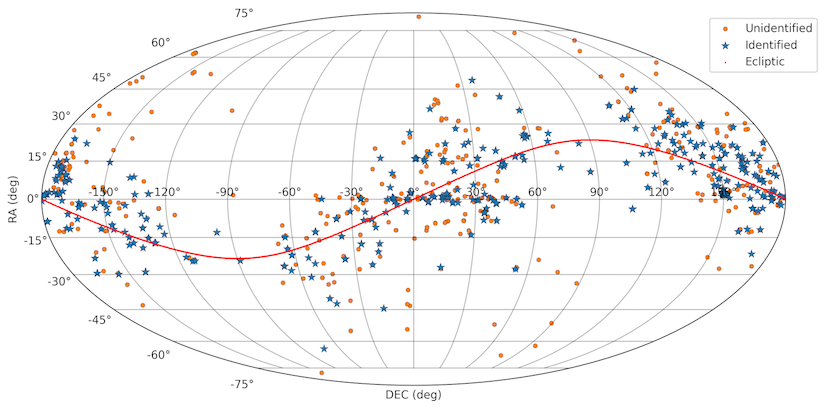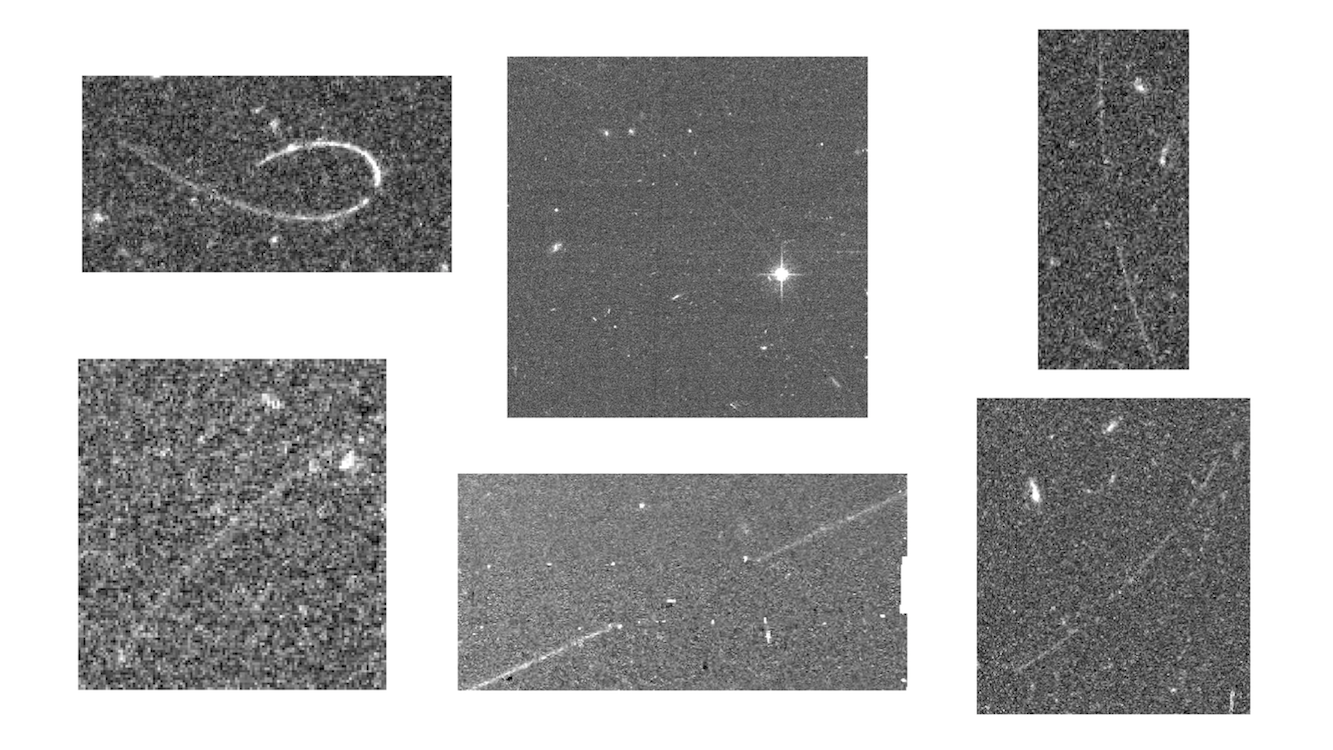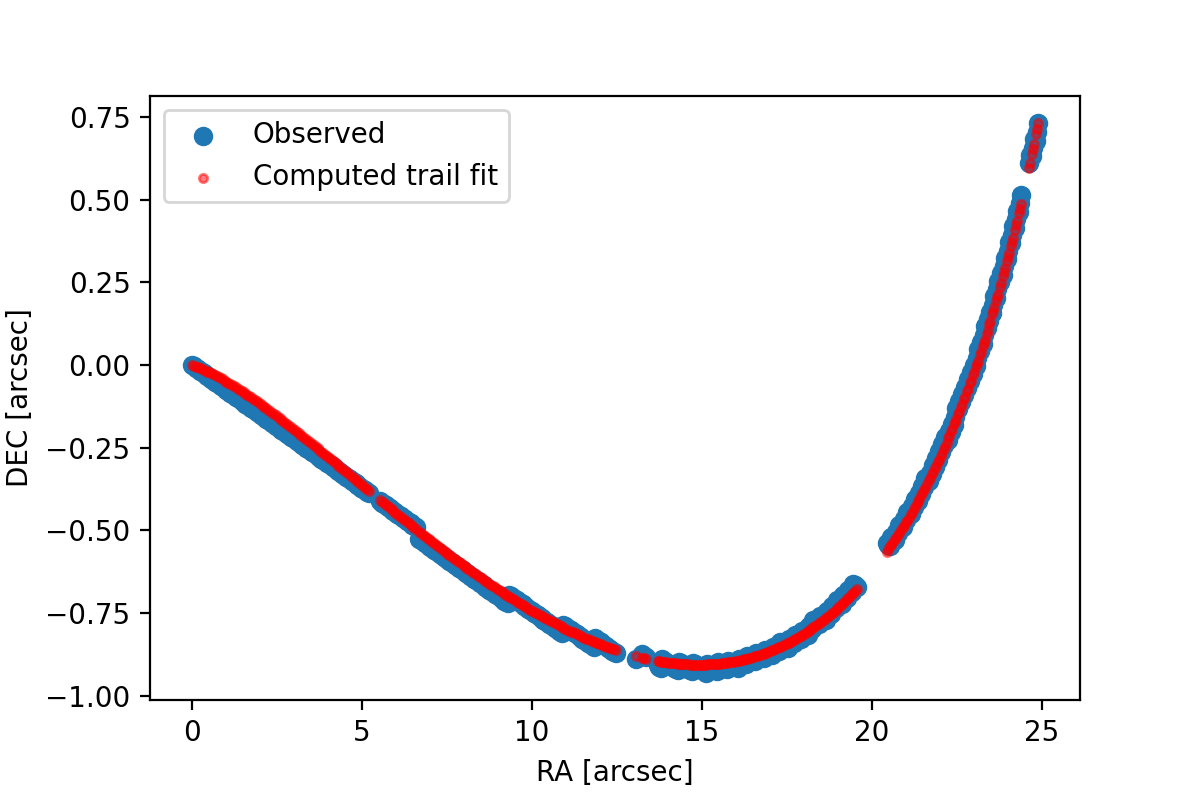Hubble Asteroid Hunter: Identifying asteroid trails in Hubble Space Telescope images
- 1Departamento de Física Teórica, Universidad Autónoma de Madrid, 28049 Madrid, Spain (pablo.garciamartin@estudiante.uam.es)
- 2Max-Planck-Institut für extraterrestrische Physik (MPE), Giessenbachstrasse 1, 85748 Garching bei München, Germany
- 3European Space Agency (ESA), European Space Research and Technology Centre (ESTEC), Keplerlaan 1, 2201 AZ Noordwijk, Netherlands
- 4Astronomical Institute of the Romanian Academy, 5 Cutitul de Argint, 040557 Bucharest, Romania
- 5European Space Agency (ESA), European Space Astronomy Centre (ESAC), Camino Bajo del Castillo s/n, 28692 Villanueva de la Cañada Madrid, Spain
- 6Université Côte d’Azur, Observatoire de la Côte d’Azur, CNRS, Laboratoire Lagrange, France
- 7Google Cloud, 6425 Penn Ave, Pittsburgh, PA 15206, USA
- 8Google, Claude Debussylaan 34, 1082 MD Amsterdam, Netherlands
- 9RHEA for European Space Agency (ESA), European Space Astronomy Centre (ESAC), Camino Bajo del Castillo s/n, 28692 Villanueva de la Canada Madrid, Spain
- 10SERCO for European Space Agency (ESA), European Space Astronomy Centre (ESAC), Camino Bajo del Castillo s/n, 28692 Villanueva de la Canada Madrid, Spain
- 11QUASAR SCIENCE RESOURCES for European Space Agency (ESA), European Space Astronomy Centre (ESAC), Camino Bajo del Castillo s/n, 28692 Villanueva de la Canada Madrid, Spain
- 12Jet Propulsion Laboratory, Mail Stop 321-100, 4800 Oak Grove Drive, Pasadena, California 91109, United States
- 13Bastion Technologies, 17625 El Camino Real # 330, Houston, TX 77058, United States
The Hubble Space Telescope (HST) archives hide many unexpected treasures, such as trails of asteroids, showing a characteristic curvature due to the parallax induced by the orbital motion of the spacecraft. We have explored two decades of HST data for serendipitously observed asteroid trails with a deep learning algorithm on Google Cloud, called AutoML, trained on classifications from the Hubble Asteroid Hunter (www.asteroidhunter.org) citizen science project.
The project was set up as a collaboration between the ESAC Science Data Centre, Zooniverse, and engineers at Google as a proof of concept to valorize the rich data in the ESA archives. I will present the first results from the project, finding 1,700 asteroid trails in the HST archives (Kruk et al., 2022). Their distribution on the sky is shown in Figure 1.
The majority of the asteroid trails (1,031) we found are faint (typically > 21 mag, see Figure 2) and do not match any entries in the Minor Planet Center database, thus likely correspond to previously unidentified asteroids (see a few examples in Figure 3). We will argue that a combination of AI and crowdsourcing is an efficient way of exploring increasingly large datasets by taking full advantage of the intuition of the human brain and the processing power of machines.
The second part of this project aims to analyze in detail these potentially new asteroids and use them to improve our current understanding of the size distribution of small-sized asteroids, and thus help constrain models of the evolution of our Solar System.
Taking into account Hubble’s motion around the Earth, the parallax effect can be computed to obtain the distance to the asteroids by fitting simulated trajectories to the observed trails and obtaining the best fit (Evans et al. 1998). We show one example of a curve fit to the observed trail in Figure 4. Once we know the distance to the asteroids, we are able to obtain their absolute magnitudes and, combined with an assumed albedo, we can obtain their sizes. This method is also able to estimate an envelope for the asteroid's main orbital parameters.
Given Hubble’s resolution and capability of reaching faint magnitudes, we expect that many of the new asteroids to be small-sized Main Belt asteroids (diameter <1 km), a population that is too faint and thus difficult to image from ground-based observatories. In addition, with the typical 30 min exposures of Hubble, some of these unknown objects show lightcurves that could be used to infer the rotation and shape of these asteroids, which is helpful for better assessing their type and origin.
This project may serve in the future as a “proof of concept” for an automated detection and analysis pipeline in large astronomical archives or surveys.

Figure 1: Distribution on the sky of the Solar System Objects (SSOs) identified in the HST images in Mollweide projection. The blue stars show the identified, known asteroids. The orange circles show the location of objects for which we did not find any associations with SSOs. The ecliptic is shown with red. The two gaps in this plot correspond to the Galactic plane, which was not observed by HST.
Figure 2: Distribution of apparent magnitudes for the SSOs identified in the HST images. The measured magnitudes for the identified objects (blue bars) and for the objects for which we did not find any associations with known SSOs (orange bars).

Figure 3: Examples of unidentified trails in HST observations. The HST observation IDs, clockwise, from the top left, are: j8pv03020, jds47w010, j9bk75010, icphg2010, jdrz23010, and jcng06010.

Figure 4: A trail fitting example using the parallax method. The distance solution yielding the best fit for a simulated parallax using HST trajectory is shown in red, in blue the observed trail.
How to cite: García Martín, P., Kruk, S., Popescu, M., Merín, B., Mahlke, M., Carry, B., Thomson, R., Karadag, S., Racero, E., Giordano, F., Baines, D., Durán, J., de Marchi, G., Laureijs, R., Stapelfeldt, K. R., and Evans, R. W.: Hubble Asteroid Hunter: Identifying asteroid trails in Hubble Space Telescope images, Europlanet Science Congress 2022, Granada, Spain, 18–23 Sep 2022, EPSC2022-1030, https://doi.org/10.5194/epsc2022-1030, 2022.

